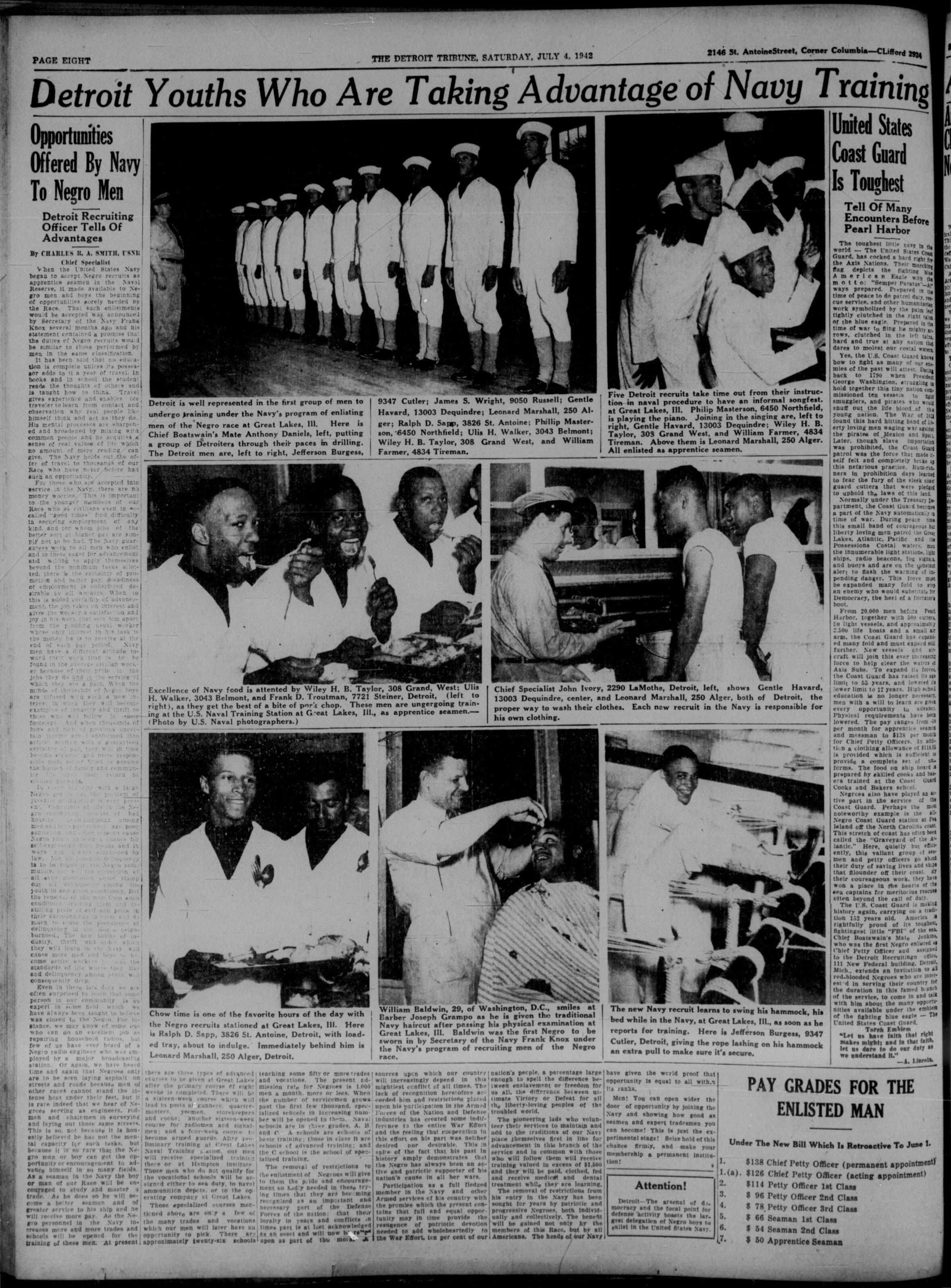“Food Service Within the Service”
Image description: A 1940s sepia-toned photograph of a young William Walker, a Black man wearing a Navy uniform and smiling gently into the camera.
Ep 5: Dec 2 2019
Moving food around the globe was about more than just feeding service members and civilians.
Young William Walker was determined to succeed. Despite segregation in the service during World War 2, William rose to Chief Petty Officer First Class in the Navy – an uncommon position of authority for African Americans, particularly in that branch. First managing PT rescue teams stateside and then overseeing his ship’s food supply holds in the South West Pacific, William’s history helps us understand a layer of the complicated web of racism and opportunity that African American service members met when they joined the World War.
Listen for free: iHeartRadio | Apple Podcasts | Stitcher | Spotify
There are lesson plans for this episode!
Misti Boettiger assisted with this episode. Elizabeth Emery was our on-site engineer with the Walkers. Thank you to Honor Flight Columbus for connecting us with the Walkers for this episode.
Behind The Episode:
William and his son Bill speak about their Honor Flight experience.
See a photo gallery of William and documents applicable to this episode at ServicePodcast.org.
Read 10 Things About the Mistreatment of Black Soldiers During World War II You May Not Know at The Atlanta Black Star.
Learn more about the history of African Americans serving in World War II at the World War II Museum.
Explore the African American Experience in the U.S. Navy at the Naval History and Heritage Command.
Learn more about the changing demographics of the military at the Pew Research Center and with the latest demographic breakdown of the Navy by gender, race, and ethnicity at the Department of Defense.
Learn a little about "The Golden 13" at the Naval History and Heritage Command and the African American Registry.
Read about the progression of African American troops in the Navy via these archived newspaper clippings:
Announcement of vocational training at Camp Robert Smalls from The Mississippi Enterprise.
A Sept 1941 article in the Key West Citizen praises the modern kitchens of Navy Ships and submarines.
This 1941 Navy avert in The Durant News makes the Navy look all about good food, training, entertainment, and travel.
This 1944 Navy advert in The Evening Star praising the advantages of the submarine life highlights upward mobility for those to whom such roles were available.
On this page in The Evening Star in June of 1943, reports show both shortages in the food supply in the Navy, and paper shortages stateside.
Image description: a black-and-white page of a Navy advertisement found in many newspapers nationwide in 1941
Image description: A 1942 news article about Navy trainees at Great Lakes, where William first trained.
Image description: Dr. William Walker - a Black man in his nineties wearing a gray sweatshirt and jeans - stands with Jacqueline Raposo - a white woman in her thirties wearing black jeans and a black top with a striped black and white jacket. They’re standing next to a couch, both looking into the camera and smiling.





